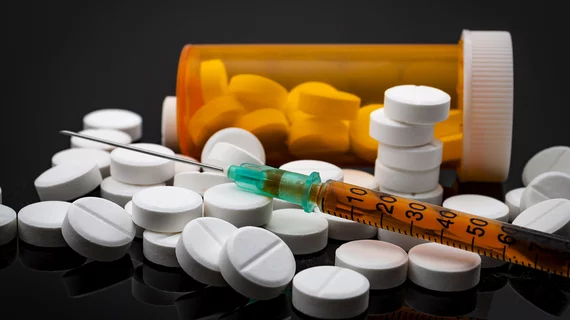Most overdose patients are not tested for fentanyl
When patients present to the emergency room (ER) with overdose symptoms, they are rarely tested for synthetic opioids, such as fentanyl. However, when tested for fentanyl, the positivity rate is more than 40%, meaning hospital ER departments are missing out on overdose surveillance as the opioid epidemic continues to ravage the United States.
In fact, the overdose crisis in the nation has reached new heights over the past few years, with more than 56,000 overdose deaths reported in 2020. Of opioid-involved deaths in 2020, fentanyl accounted for 82%. Overdoses and other unintentional injuries are the top cause of death for Americans between 1 and 44, while fentanyl overdoses are the top cause of death for Americans aged 18 to 45.
Instead of screening for fentanyl, hospitals typically administer naloxone in suspected overdoses to address symptoms right away. Toxicology tests, even when administered, also often don’t screen for fentanyl, according to researchers from Epic and the University of Maryland's Center for Substance Abuse Research (CESAR). Researchers used data from Cosmos to study toxicology screening patterns from more than 315,000 ED overdose visits in the U.S. between 2017 and August 2022.
The study underscores the need for more toxicology screenings and a standard for overdose surveillance. CESAR has conducted other collaborations with ER departments on fentanyl toxicology in the Baltimore area. CESAR received funding to expand its work following its latest publication, which was featured as a CDC Morbidity and Mortality Weekly Report. Researchers will expand research with its Emergency Department Drug Surveillance (EDDS) system to 20 additional hospitals. The EDDS currently includes 39 hospitals across the U.S.
CESAR suspected a lack of fentanyl testing at other hospitals across the U.S., and was able to confirm its findings in this latest study, which was published by Epic.
"Comprehensive toxicology screenings are critical to both lifesaving treatments in the ED and effective public health efforts in the community," Dave Little, MD, director of clinical informatics at Epic and co-author of the study, said in a statement. "We need to know precisely how people are struggling so that we can help them before their lives are on the line."
The data revealed only 5% of patients are tested for fentanyl in overdose-related ED visits. However, the opiate testing rate is nearly 50%. That testing ratio is even more skewed due to the prevalence of fentanyl use and overdose, as the positivity rate for opioids has decreased since 2017, to below 14%, researchers found.
"Our findings highlight the need for a centralized overdose surveillance system and a nationwide standard for toxicology screenings in overdose treatment in order to track drug epidemics,” said Eric Wish, PhD, director at CESAR and co-author of the study. “This will give medical personnel the information they need to accurately diagnose and treat overdoses and other related problems and improve patient outcomes.”

